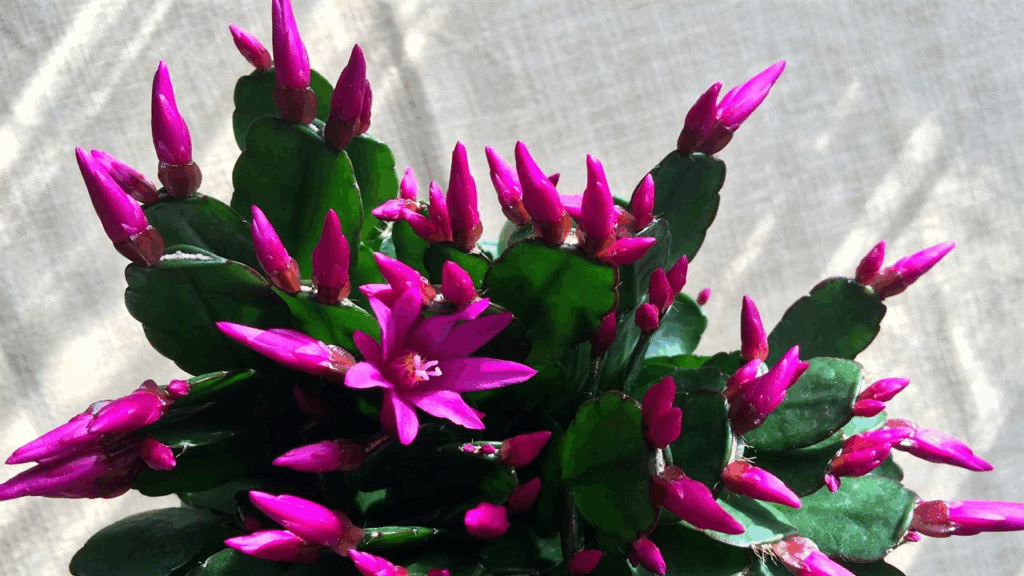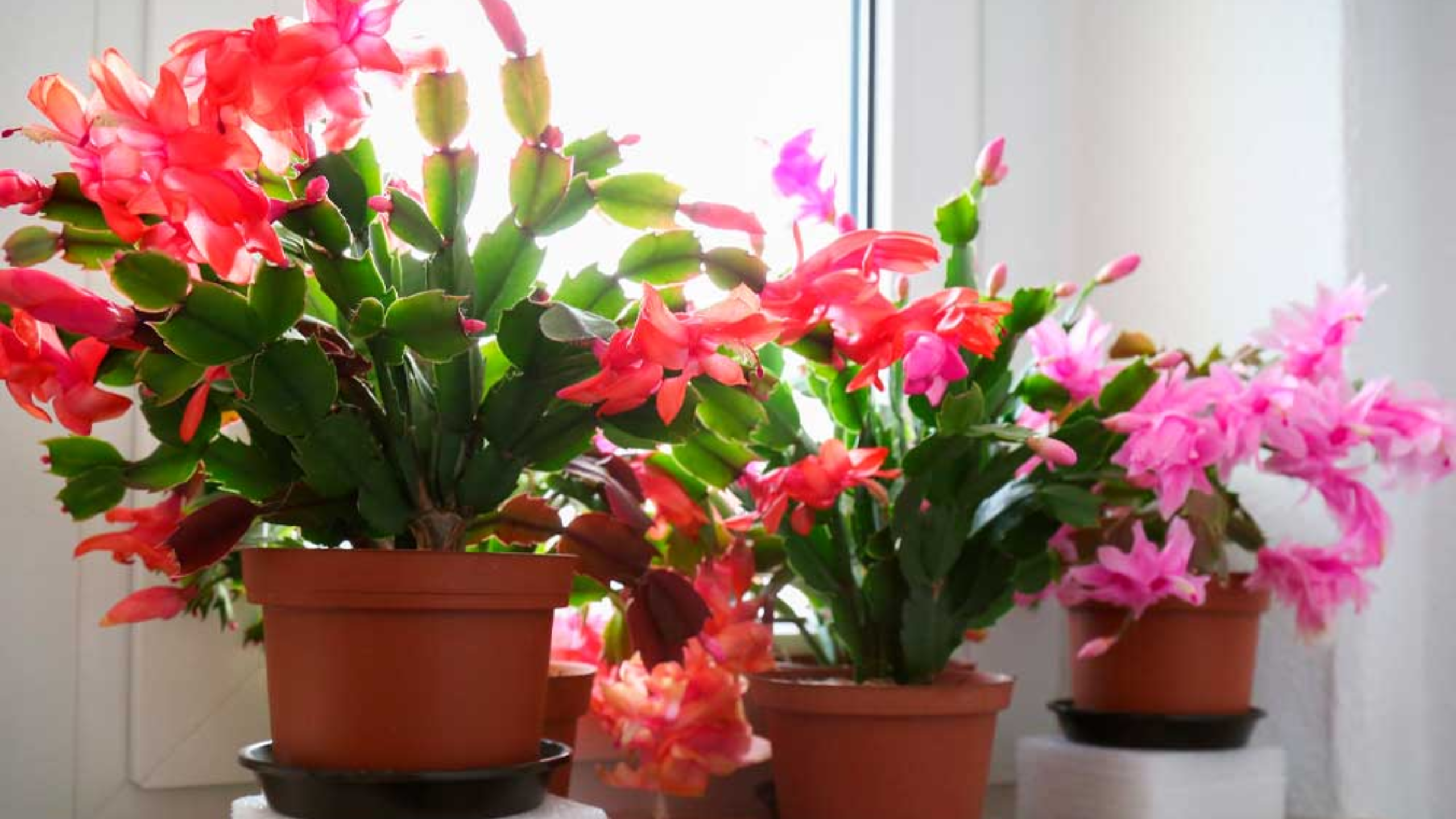If you’re a plant enthusiast or just looking to brighten your holiday season, the Christmas cactus (Schlumbergera bridgestii) is a delightful choice. Known for its vibrant, festive flowers, this plant can bring cheerful color to your home every year. But did you know that giving it a period of darkness is essential to promote flowering? Let’s explore the best techniques and timing to help your Christmas cactus bloom perfectly for the holidays.
Why Does Darkness Matter for Your Christmas Cactus?
Unlike many other houseplants, the Christmas cactus relies on a natural process called photoperiodism—its flowering depends on exposure to certain light cycles. In its natural habitat in Brazil, the cactus grows in regions where days become shorter in late autumn and winter. This reduction in daylight signals the plant that it’s time to flower.
By mimicking these conditions, you can encourage your cactus to bloom indoors, even if you’re not in Brazil. This involves providing a period of complete darkness for about 12-14 hours each night for several weeks before the desired flowering time.
When Is the Best Time to Begin the Darkness Period?
Timing is crucial. To get your Christmas cactus to flower for the holiday season, start the process around mid or late October.

Here’s why:
- Starting in early autumn aligns with the plant’s natural response to decreasing daylight.
- A period of 6 to 8 weeks of darkness allows the plant’s hormonal processes to initiate flowering.
- Proper timing ensures blooms during late November or early December, perfect for festivities.
How to Create the Perfect Dark Cycle
Ensuring complete darkness during the specified hours is essential. Here are practical tips:
- Place your plant in a completely dark room each night—avoid any ambient light.
- Alternatively, cover the plant with an opaque box or cloth to block light.
- Consider placing the cactus in a closet or cabinet overnight.
- Make this a consistent routine — the plant should experience the same light pattern every day without exceptions.
Consistency is key. Interruptions in darkness can delay or prevent flowering.
Provide Bright, Indirect Light During the Day
While darkness at night is crucial, your cactus needs ample light during the day to stay healthy.
- Aim for 6 to 8 hours of bright, indirect sunlight daily.
- Place the plant near a window with filtered light or use sheer curtains.
- Avoid direct sunlight, which could scorch its delicate leaves.
This balance between dark nights and bright days helps the plant develop healthy buds and vibrant flowers.
Maintain Consistent Light Cycles
Once you’ve established the dark and light periods, maintain the routine daily. Here’s what to keep in mind:
- Never expose the cactus to artificial light during the intended dark hours, including streetlights or indoor lamps.
- Adjust your routine if you travel or are away, keeping the dark period consistent.
- Consistency ensures the hormonal signals controlling flowering are accurately triggered.
Avoid Common Mistakes
Certain errors can hinder your Christmas cactus from flowering as desired:
- Don’t place it near heat sources like radiators or heaters, which can stress the plant.
- Avoid moving the plant extensively after buds begin forming, as this can cause buds to drop.
- Be cautious when watering during the dark period—keep the soil evenly moist but not waterlogged.
- Watch out for pests or diseases that weaken the plant, reducing its flowering potential.
Supporting Your Plant’s Overall Health
A healthy cactus is more likely to bloom beautifully. During the flowering preparation:
- Ensure proper watering—allow the soil to dry slightly between waterings.
- Use well-draining soil suited for cacti and succulents.
- Fertilize lightly with a balanced, diluted fertilizer during the active growth period, but reduce feeding during the flowering induction phase.
Share Your Experience and Common Questions
Many plant lovers have their own tips and experiences. Some find that their cactus blooms without strict darkness—a sign that individual plants may vary. Others note they keep their cactus outdoors or on shaded patios, which can sometimes lead to successful flowering.
Questions often asked include:
- Can I put my Christmas cactus in darkness now?
Yes, but it’s best to start the dark period in October for holiday blooms. - My plant is big and hanging; can I cover it?
Covering a large or hanging cactus can be tricky. Use a portable box or move it to a darker room temporarily. - My cactus blooms without dark treatment. Why?
Some varieties naturally bloom with less light manipulation, or environmental factors like temperature and general health influence flowering.
Real-Life Experiences and Tips from Other Plant Lovers
- Dolores from Spain mentions she keeps hers outside under a roof, and it still blooms perfectly every Christmas.
- Elsa observes that giving her plants ample morning sun and a shaded rest during summer helps them thrive year-round.
- Erika laughs off some myths, sharing that she waters her cactus sporadically, yet it blooms reliably—showing that individual plants adapt differently.
Final Thoughts
Getting your Christmas cactus to bloom on time takes a little planning, but it’s well worth the effort. Starting the dark treatment around mid to late October and maintaining a consistent routine can produce stunning, festive flowers right when you want them.
Remember, each plant is unique. Pay attention to its health and adapt your care accordingly. Whether you follow traditional methods or experiment based on your environment, the key is patience and consistency.


how to get amoxicillin without a prescription – cheap amoxil generic order amoxicillin
buy generic forcan – forcan pill diflucan online order
order cenforce 50mg pill – order cenforce 100mg online cheap purchase cenforce generic
generic cialis 20 mg from india – what does cialis look like order cialis no prescription
cialis premature ejaculation – cialis maximum dose buying generic cialis
buy cialis vs viagra – https://strongvpls.com/# viagra men sale
I’ll certainly return to be familiar with more. site
More posts like this would persuade the online space more useful. side effects of prednisone short term use
This is the stripe of serenity I take advantage of reading. https://ursxdol.com/cialis-tadalafil-20/
More delight pieces like this would insinuate the интернет better. https://prohnrg.com/product/omeprazole-20-mg/
More content pieces like this would insinuate the web better. https://ondactone.com/product/domperidone/
This is a theme which is forthcoming to my callousness… Numberless thanks! Unerringly where can I lay one’s hands on the connection details due to the fact that questions?
https://doxycyclinege.com/pro/spironolactone/
Facts blog you possess here.. It’s obdurate to find elevated status writing like yours these days. I truly recognize individuals like you! Take care!! http://anja.pf-control.de/Musik-Wellness/member.php?action=profile&uid=4704
buy forxiga 10 mg for sale – janozin.com buy dapagliflozin pills for sale
order xenical sale – https://asacostat.com/ how to buy xenical
More articles like this would remedy the blogosphere richer. http://3ak.cn/home.php?mod=space&uid=230362
You can keep yourself and your dearest nearby being wary when buying panacea online. Some pharmaceutics websites manipulate legally and provide convenience, privacy, sell for savings and safeguards to purchasing medicines. buy in TerbinaPharmacy https://terbinafines.com/product/kamagra.html kamagra
This is the amicable of serenity I have reading. order inderal 10mg online cheap
You can keep yourself and your dearest by way of being heedful when buying medicine online. Some pharmaceutics websites function legally and put forward convenience, solitariness, bring in savings and safeguards as a replacement for purchasing medicines. http://playbigbassrm.com/
Thanks on sharing. It’s first quality.
https://t.me/s/officials_pokerdom/3711
https://t.me/s/RejtingTopKazino
RocketPlay ist eine attraktive Alternative zu anderen Casinos und bietet
Spielern eine bequeme und unterhaltsame Möglichkeit, das Spielerlebnis zu genießen. Die
mobile Version unseres Live Casinos bietet dieselben hohen Standards wie die
Desktop-Version. Egal welches Gerät Sie verwenden, Sie erhalten immer
die bestmögliche Spielerfahrung. Unser mobiles Live Casino bietet dieselbe Qualität und Funktionalität wie die
Desktop-Version.
Für besonders engagierte Spieler bietet das Rocket Reward
Loyalty Programm ein exklusives Belohnungssystem. Das Casino überzeugt mit einem umfangreichen Bonusangebot, das sowohl neuen als auch bestehenden Spielern zahlreiche Vorteile bietet.
Slots sind das Herzstück des Casinos und bieten eine
riesige Auswahl an Themen, Mechaniken und Bonusfunktionen. Das Casino bietet eine beeindruckende Casino
Rocket Best Game Auswahl an, die von einigen der besten Softwareentwickler der
Branche bereitgestellt werden. Rocket Casino bietet nicht
nur ein futuristisches Design und eine intuitive Benutzeroberfläche, sondern überzeugt auch mit
vielen Highlights, die es von der Konkurrenz abheben. Mit
einem exzellenten Spieleangebot, einem belohnenden VIP-Programm und schnellen Auszahlungen sorgt Casino
Rocket online Kasino für einen reibungslosen Spielablauf auf allen Geräten.
RocketPlay ist ein führendes live dealer casino mit einer großen Auswahl an live dealer games, darunter beliebte Klassiker und spannende
neue Formate. So wird das Live Casino spielen bei RocketPlay
zu einem echten Highlight für alle, die Wert auf Qualität, Unterhaltung und Sicherheit legen. Die
Verbindung von Interaktion, Spannung und Komfort macht Live Casino spielen zur ersten Wahl für viele Casino-Fans in Deutschland und Österreich.
Ob Sie ein erfahrener Spieler sind oder zum ersten Mal
ein Casino online besuchen – Live Casinos bieten für jeden das
passende Angebot und machen das Spielen zu einem besonderen Erlebnis.
Auf der anderen Seite empfehlen wir Casino Rocket nicht für Spieler,
die an großzügigen Boni, nachsichtigen Einsätzen, Sportwetten und Bonuseinsätzen interessiert sind, die in Live-Casinos und Tischspielen gelöst werden können.
References:
https://online-spielhallen.de/malina-casino-login-ihr-tor-zu-einer-welt-voller-unterhaltung/